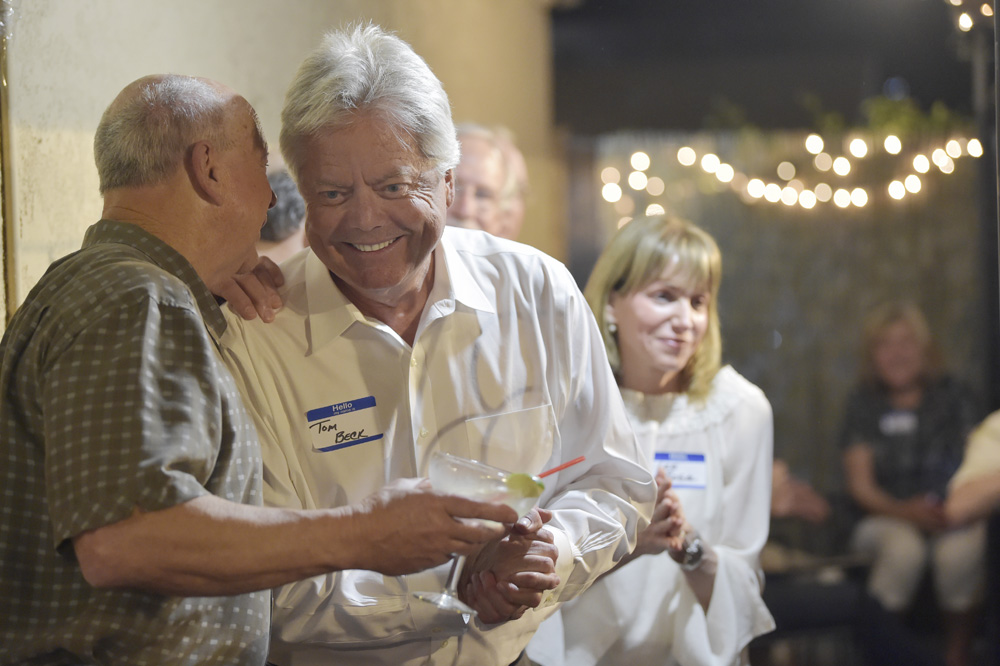By Joe Taglieri
Due mainly to solid property, utility and sales tax revenue, Arcadia has remained fiscally sound despite a sluggish state and national economy, City Manager Dominic Lazzaretto reported last Thursday in the annual “State of the City” address.
In an event hosted by the Arcadia Chamber of Commerce at the local Embassy Suites Hotel, Lazzaretto gave a detailed rundown of Arcadia’s financial big-picture and profiled noteworthy issues and happenings set to take place in the coming year.
Overall in 2014, the city received $56.9 million in revenue and spent $54.7 million.
One lingering area of concern is projected shortfalls in funds to cover infrastructure improvements and equipment for city services such as police and fire department vehicles, furniture at facilities including the library and recreation center, and computers and street sweepers, to name just a few.
“We were able to push about $2.2 million into our Capital [Improvement] and Equipment funds,” Lazzaretto told an audience of local businesspeople as well as a variety of past and present city officials at the chamber’s annual Planning Conference. “That sounds like a great thing, [but] we’d rather be transferring more like $3 million a year into those funds because we have that much demand on an annual basis.”
The city manager credited Arcadia’s 7 percent tax on residents’ gas, electric and water usage and a 5 percent levy on telephone bills for generating the capital and equipment funding boost.
“With the economic crash in 2008, the city stopped putting revenues into the funds and for several years we spent down the balances,” Lazzaretto explained in an email to Arcadia Weekly. “This made it possible to avoid layoffs and cuts to services so that the public didn’t feel the pinch of the downturn. But, as we looked to the future, we saw that the two funds would have run out of money as early as 2015 if we didn’t start putting money into them again.”
City employees have made an effort to make due with existing equipment, Lazzaretto said. As an example he noted the Arcadia Fire Department’s plans to forgo a new ambulance, instead opting to save two-thirds of the cost by refurbishing the existing ambulance box and replacing only the worn-out chassis and engine.
Steadily rising real estate values throughout the last decade have increased property tax revenue, which narrowly edged sales tax as the city’s largest funding stream. Each provide about a third of the city’s tax revenue.
The largest sales tax generators were the merchants that comprise the Westfield shopping mall along with the rest of the retail sector, Arcadia’s relatively numerous restaurants and hotels and Rusnak Mercedes-Benz, the sole representative of the auto industry which ranked third overall and is the only car dealership in the city.
“We’d like this to be a more evenly-split-across-the-board kind of curve, but if we have to have a whole lot of money in one area retail’s a pretty good one to have — unless you start shopping on the Internet, so please, stop shopping on the Internet,” Lazzaretto quipped in reference to the city’s loss of sales tax revenue when residents shop online.
“When someone buys a taxable item at an Arcadia based store, the city receives 1 percent of the purchase price,” Lazzaretto explained via email. “When someone buys that same item on the Internet, one of two things happens. In the worst case scenario the company has no physical presence in California, no sales tax is charged and the city receives nothing. …
“The other option is that sales tax is charged to the customer because the Internet company has a physical presence in California and is required to do so … but the revenue goes into a county ‘pool’ of Internet sales,” he continued. “We then receive a proportional share of that tax based on the total traditional brick-and-mortar sales taxes generated in the city.”
Lazzaretto’s presentation also illuminated the $8.3 million earmarked for a range of infrastructure improvements including several street projects on Huntington Drive and Foothill Boulevard in the northeast sector of the city.
“So bear with us, it’s going be a year of construction but at the end of all of that the city should flow pretty well,” Lazzaretto said.
In addition to lots of street construction, a project to provide pedestrian access to the forthcoming Arcadia Gold Line station topped Lazzaretto’s list of capital improvements. The city’s share of the $2.4 million total is roughly $800,000 with the state funding the remaining $1.5 million, according to a document from the Southern California Association of Governments.
“The Gold Line is coming … and we’re doing everything we can to get ready for it,” said Lazzaretto, who then announced the Development Services Department’s receptiveness to ideas for community events at the new rail station.
Several high-profile real estate developments were featured in the city manager’s address that included: two large Huntington Drive medical buildings — one that opened last summer by developer Hale Corp., and the other by Soo Properties that is currently being built; the new Rusnak Mercedes showroom under construction on Santa Anita Avenue; the Seabiscuit Pacifica project, a massive art-deco style hotel development near Santa Anita Park horse racing track; the proposed Dorn-Platz project featuring 38 residential units atop 16,200 square feet of ground-floor commercial space; and Walbern Developments’ proposed apartment complex in south Arcadia.
Lazzaretto’s complete Power Point presentation is available on the city’s website, www.ci.arcadia.ca.us.



